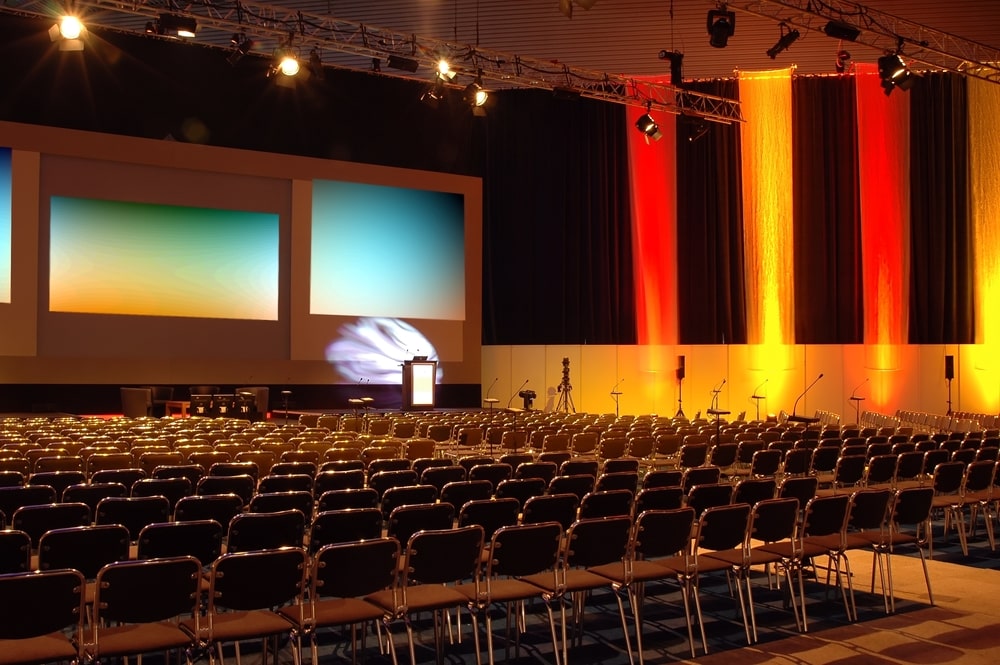Hybrid events were a lifesaver in 2020 and will continue throughout 2021. They allowed companies to host meetings during the pandemic’s height when lockdowns and fear were widespread. People could choose to attend in-person or virtually. Venues were less crowded, making it easier to apply social distancing measures.
But now, as the world inches its way back to normalcy, onsite events are taking making a comeback. There is just no substitute for in-person events where people can connect face-to-face and share the same physical space. Learning and networking are better. The feeling of connecting in this personal way is palpable. Engagement levels are incomparable.
This trend towards onsite meetings is excellent news for businesses in all industries. That said, making the transition successful does require skill and careful planning. People have become used to attending virtually and being with smaller groups when they participate in in-person. Those who skipped onsite events in favor of virtual attendance may also feel a bit of apprehension.
The tips in this article will help organizations navigate the exciting months ahead to pull off immersive and engaging in-person meetings.
Create a Sense of Safety
Naturally, some people will feel a bit of discomfort at the idea of sharing a space with a large group. After all, many spent months communicating from behind a computer screen. Fortunately, there are ways that companies can make them more comfortable.
Establishing safety protocols is the first step. They may include:
- Administering COVID-19 tests (for prescreening) or testing before the event
- Informing attendees about what they need to know before traveling
- Complying with government standards for COVID-19 precautions (e.g., the distance between attendees, masks whether or not individuals are vaccinated, etc.)
- Forming an internal safety task force to ensure compliance while encouraging attendees’ participation, minimizing exposure if someone becomes ill, etc.
- Utilizing signs, messages, participant gift bags or merchandise, and other materials to promote and encourage protective measures
- Providing sanitizing stations to make handwashing easy and assessable for everyone.
- Exploring safe food and beverage options such as box lunches, made-to-order pick-up meals, table-side service, etc.
Creating a task force for safety measures serves a couple of benefits. The first is the presence of a team dedicated to sanitizing surfaces and seeing that safety standards are upheld. The second is an organized way to report and track COVID-19 cases, should any occur.
The final piece of the safety puzzle is making all of these precautions public. Doing so will reassure attendees who may feel anxiety. Sharing certifications the business has obtained from government agencies is critical for this reason.
Companies can take this concept a step further and create their certifications, provided they have documentation to back up the claims. These certifications should be made public, as well.
Choose the Right Venue
The necessity of selecting a venue that meets all the event’s requirements needs to be obvious. But with in-person events temporarily taking a backseat to virtual and hybrid events in 2020/21, a reminder is vital.
Organizations should consider the following when evaluating venues:
- The appropriate capacity for the expected attendance accommodating for social distance requirements
- Spaces they can set aside for networking, including outdoor options
- Foodservice capabilities and space, and delivery options
- Technology such as the sound system and registration equipment
- The efficiency of ventilation systems can be quite complex
Establish an Active Industry Presence
Leadership and management should be active in their industry on an ongoing basis, not just when an in-person meeting is approaching. Doing so is crucial because it provides insight into industry trends and news.
Remaining active also affords meeting planners the leverage to work with industry peers towards solutions. They can then apply these solutions to events. Additionally, the connections forged may well give them access to valuable insider information they can leverage for onsite meetings.
Active participation includes engaging in discussion groups on LinkedIn, joining industry forums, contributing to and reading industry surveys and polls. These activities are by no means an exhaustive list; every business can find ways to establish an active industry presence.
Embrace Agility
2020 proved that the world could change on a dime. The businesses that survived were those that approached the situation in an agile way. The importance of embracing agility is an eternal truth; it is not limited to only times of upheaval.
In-person events are ramping back up quickly. For this reason, companies, especially event and meeting planners, must adapt quickly. They must position themselves so they are prepared to meet the growing demand. Balancing preparation with thinking on their feet is essential.
Communication – both internal and with target audiences – is a key part of achieving this balance. Meticulous planning is encouraged, but so is listening and learning from past attendees and industry feedback.
The evolution from in-person events to virtual, to hybrid, and back to in-person events is one business must master. Fortunately, through careful planning and keeping an ear to the ground in their industry, companies can evolve – and forge a path to a bright in-person meeting future.
Uncertain times call for creative thinking. Contact Gavel International to be inspired with solutions that connect and engage your people.
- A Meeting Planner’s Guide to Using Drone Photography - April 15, 2024
- 11 Essential Items a Meeting Planner Must Have in an Event Kit - March 25, 2024
- Gavel International Joins in Global Meetings Industry Day 2024 (#GMID2024) Celebration - March 22, 2024







